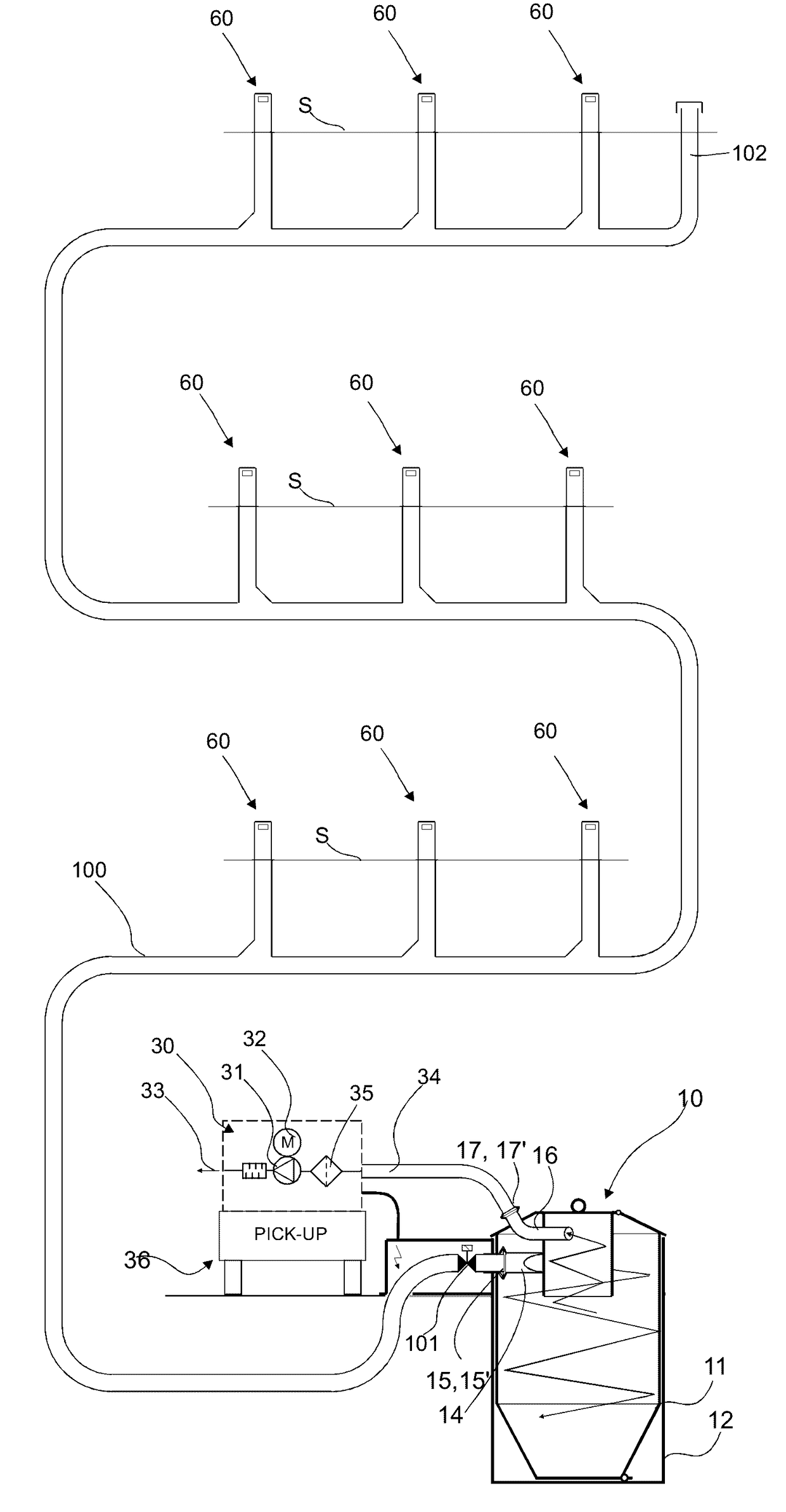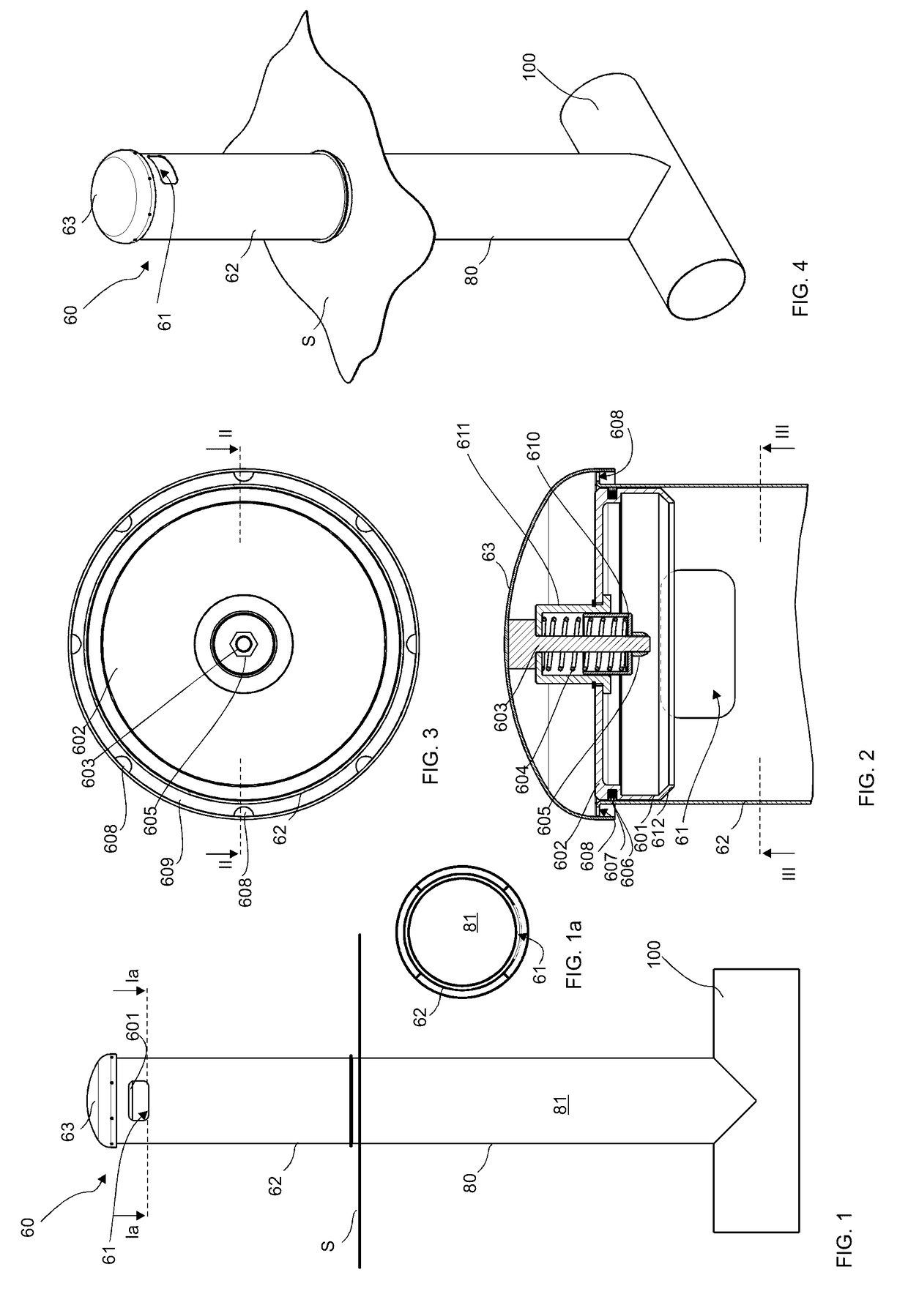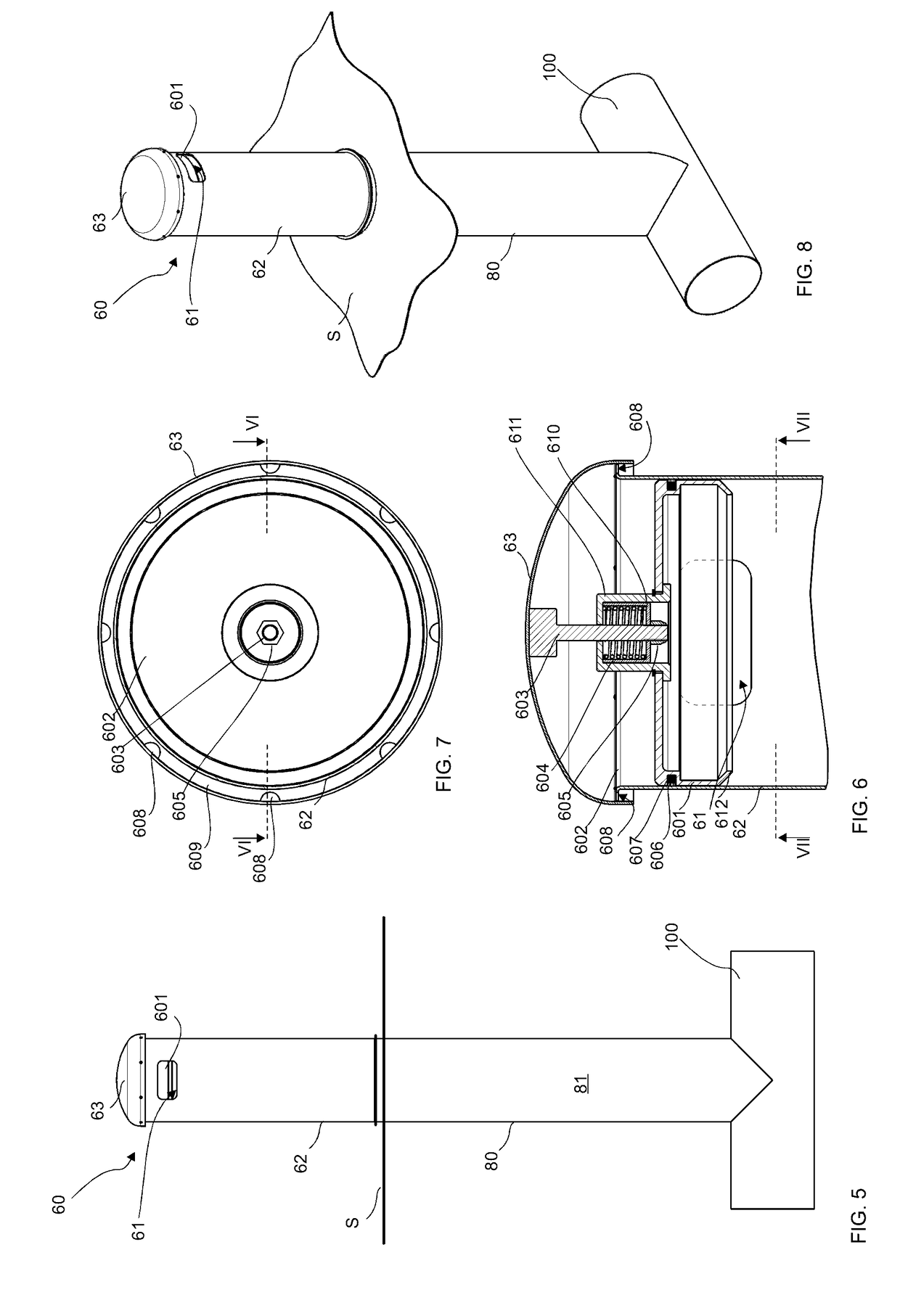Method for handling material in a material conveying system, an input point of a material conveying system and a material conveying system
- Summary
- Abstract
- Description
- Claims
- Application Information
AI Technical Summary
Benefits of technology
Problems solved by technology
Method used
Image
Examples
Embodiment Construction
[0031]FIGS. 1-2 present a part of a pneumatic material-conveying system, which part comprises a material conveying pipe 100, along the side of which at least one, typically many, input points 60 are arranged. An input point 60 is a feed-in station for material, more particularly of waste material, intended to be transported, from which station the material, more particularly waste material, such as litter, household waste, or recyclable material intended to be transported, is fed into the conveying system. An input point 60 can also be a refuse chute, into which material is fed from input apertures on different floors of a building. The system can comprise a number of input points 60, from which the material intended for transporting is fed into conveying piping 100. An input point 60 is connected directly to the conveying pipe 100 or to an input pipe 80 in connection with it. Inside the input pipe is a feed-in channel 81, which extends to the conveying pipe 100. The feed-in channel...
PUM
 Login to View More
Login to View More Abstract
Description
Claims
Application Information
 Login to View More
Login to View More - R&D
- Intellectual Property
- Life Sciences
- Materials
- Tech Scout
- Unparalleled Data Quality
- Higher Quality Content
- 60% Fewer Hallucinations
Browse by: Latest US Patents, China's latest patents, Technical Efficacy Thesaurus, Application Domain, Technology Topic, Popular Technical Reports.
© 2025 PatSnap. All rights reserved.Legal|Privacy policy|Modern Slavery Act Transparency Statement|Sitemap|About US| Contact US: help@patsnap.com



